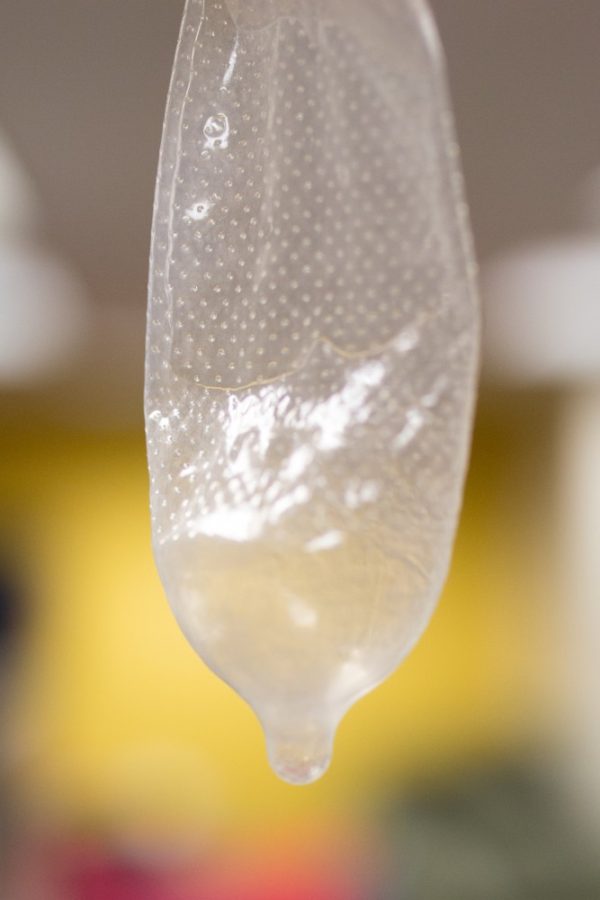“What are you here for?” asked a perpetually stressed woman at the UA Campus Health Service.
“I’m getting rechecked for chlamydia. The doctor …”
“Oh. Oh, I should have had you write that down. I’m sorry,” she said, with her eyes never leaving the desktop computer screen.
I take a second to look around at the three other inhabitants of the lobby, expecting them to run out in horror, overwhelm me with condolence casseroles or for one of them to be the guy with whom I had unprotected sex. He would be charging at me with a pitchfork or offering me a diamond ring so we could raise our STI together.
“It’s okay,” I said. “Really.”
No one else in the waiting room could hear me over their phone conversations or music. I bet at least one of them was there for the same reason.
I want the 71 percent of UA students having sex, casual or committed, to not just be safe or smart, but to understand the consequences. I want them to know the steps to take when experiencing symptoms or getting a positive test result.
A discouraging amount of physicians do not annually screen their patients for sexually transmitted infections.
Women over 21 have yearly “pap” tests and often assume their gynecologist is able to diagnose any STI from this exam. That is not true.
“I know it’s annoying,” said Dr. Elise Konigsberg of Campus Health. “But you’ve just got to use a condom.”
About one in five people in America are estimated to have herpes, with roughly 90 percent of those people unaware of their infection. By 2025, 40 percent of men and 50 percent of women in the U.S. could be infected.
A rise in herpes can be attributed to the practice of oral sex being mistaken as a safer option than genital to genital intercourse, but a person with herpes on their mouth can transmit the infection to genitalia. Consider using protection for oral sex.
It’s for your own good. Don’t feel selfish and don’t feel annoying. Although more than half of all people will contract an STI at some point in their lives, you don’t have to join that statistic. Safe, consensual sex is the best.
The signs are all around campus: “This rash could be syphilis.” They are not without cause.
Dr. Francisco Garcia, chief medical officer of the Pima County Department of Health and a UA professor of public health, reports a rising rate of syphilis infection, especially among high risk candidates.
The Centers for Disease Control and Prevention’s reported in 2014 that syphilis rates were highest among gay and bisexual men. Instances of the disease increased 15 percent that year. Gonorrhea increased 5 percent and chlamydia reported the highest number of cases of any sexually transmitted disease ever recorded by the CDC after seeing a 2.8 percent increase since 2013.
The terms STI and STD may seem interchangeable at first. The difference: the deftness of the diseases. The word disease denotes clear signs and symptoms which are not present in many infected people, especially recently after an infection occurs.
Overall, these three STIs, common among young people, have seen notable increases in recent years. Ten million new STIs are reported yearly in our country among high school and college-aged people. Statistically, by the time you are 25, either you or your best friend should have dealt with an STI. It’s not too late to take this safe sex advice and prevent becoming a part of that statistic.
Knowing the right kind of lube to use can be crucial in avoiding catastrophe. Common knowledge is that water-based lubes are safer, but many do not know why. It turns out that oil-based lubricants can break down latex condoms, allowing STIs to pass through.
Maybe you have been lucky enough to be vaccinated against human papillomavirus (a practice which is becoming more common) and believe that you have protected yourself or your partners against a cancer. This, of course, is not the case.
Chlamydia is the most common bacterial STI, especially among young people. Untreated chlamydia and gonorrhea in men and women can lead to damage and can cause a greater risk of infertility. New antibiotic-resistant forms of gonorrhea have been reported which increase risks.
Though it may not sound as bad or life-threatening as cancer, pelvic inflammatory disease does irreversible damage to reproductive systems. As many as 15 percent of women in America are infertile because of an untreated STI.
If you live under a rock, you may not have heard of the zika virus, which is an STI. The CDC reports that it is not widespread and the biggest risk factor is for pregnant women living in or traveling to areas of Central America and South America. Specific types of mosquitoes have been infecting people at an increasing rate in these areas.
Dr. Jonathan Mermin, director of the National Center for HIV/AIDS, viral hepatitis, STD and TB Prevention, claims that even today too few schools teach prevention of STIs and pregnancy.
If you or a friend are ever unsure about something sex-related, remember it’s always better to talk to a professional on campus than diagnose yourself or obtain false info from online sources.
Campus Health’s Sex Talk Resource Fair last week offered education on safe sex along with free condoms. These resources are always available through Campus Health, with discounted condoms that you can charge to your bursar’s account and Free Condom Fridays.
Follow Gretchyn Kaylor on Twitter









